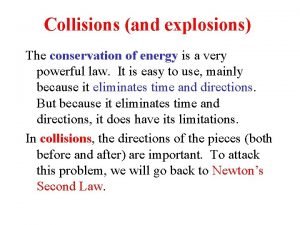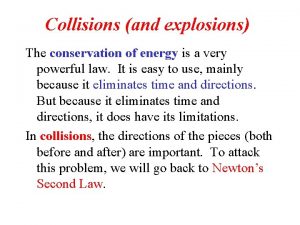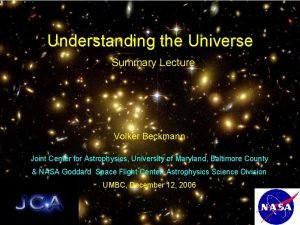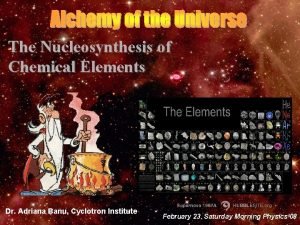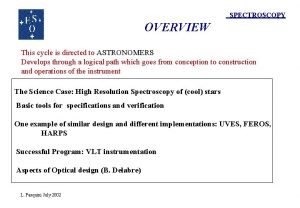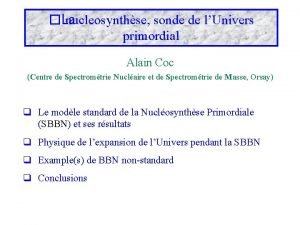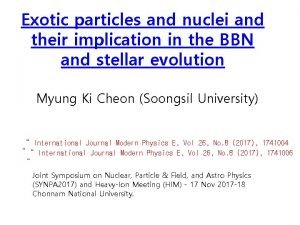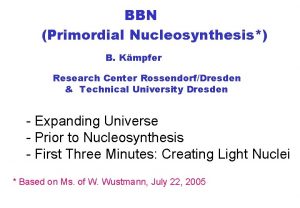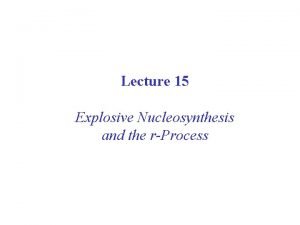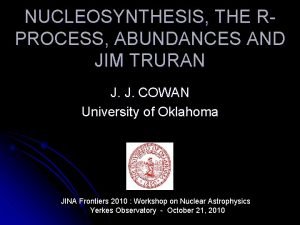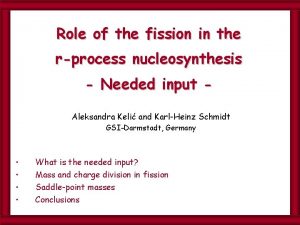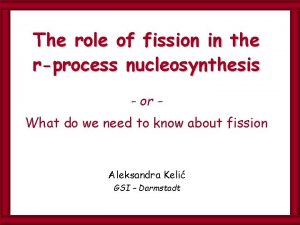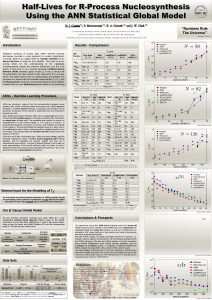Rprocess Nucleosynthesis in Supernova Explosions Ryohei Fukuda 1







- Slides: 7

R-process Nucleosynthesis in Supernova Explosions Ryohei Fukuda 1, Motoaki Saruwatari 1, Masa-aki Hashimoto 1, Shin-ichiro Fujimoto 2 1 2 Department of Physics, Kyushu University, Fukuoka Department of Electronic Control, Kumamoto National College of Technology, Kumamoto M. Saruwatari, M. Hashimoto, R. Fukuda and S. Fujimoto, “R-process Nucleosynthesis in MHD Jet Explosions of Core-Collapse Supernovae, ” Journal of Astrophysics , vol. 2013, Article ID 506146, 13 pages, 2013

Introduction � r-process ◦ One of the mechanisms to produce the elements heavier than Fe ◦ High entropy or low electron fraction Ye are needed. (Hoffman+1999) ◦ r-abundance pattern of r-process rich low metallicity stars : consistent with the solar one ◦ Sites : supernovae (e. g. , Winteler+2012) or neutron star mergers (e. g. , Korobkin+2012) Cowan & Sneden 2006

Motivation � Nishimura et al. 2006 ◦ Adiabatic explosion without neutrino effects ◦ R-elements distribution is almost consistent with the solar system abundances. ◦ Neutrino capture processes enhance Ye and reduce the production of r-elements? � Winteler et al. 2012 ◦ 3 D MHD simulation with neutrino effects ◦ Abundant r-elements ◦ Short simulation time confirm the possibility of the r-process in SNe, we performed 2 D MHD simulation including neutrino effects with longer simulation time � To

Methods � MHD simulation ◦ ZEUS-2 D code (Stone & Norman 1992) ◦ Shen Eo. S (Shen et al. 1998) ◦ presupernova model : 3. 3 M 8 He core (Hashimoto 1995) ◦ 0 < r < 4000 km, 0 < θ < π/2 (300 (r )× 30 (θ ) grid) which covers the Fe core and inner part of Sirich layer ◦ Including neutrino effects (leakage scheme) � Nucleosynthesis calculation ◦ ~4000 nuclear species ◦ FRDM & ETFSI mass model

Initial conditions and models Model 1 0 0 0 Model 2 0. 5 0. 1 1 1 5. 2 5. 4× 1012 Model 3 0. 5 0. 1 0. 5 1 7. 9 1. 0× 1013 Model 4 0. 5 0. 1 1 42. 9 5. 2× 1013 Model 5 1. 5 0. 1 1 72. 9 5. 2× 1013

Results Model 1 111 283 0 0 0. 023 - - Model 2 125 311 6. 91 0. 053 0. 127 - - Model 3 129 329 8. 74 0. 116 0. 164 - - Model 4 133 433 8. 80 0. 142 1. 13 0. 111 - Model 5 180 624 15. 3 0. 339 0. 484 0. 022 5. 90× 10 -3 Model 5 produces jet like explosion. Only third peak is reproduced.

Summary � We performed 2 D MHD simulation of magnetorotationally driven SNe with neutrino effects using the leakage scheme. � Strong jet-like explosions are obtained in model 5. � We calculate nucelosynthesis inside the ejecta including the r-process. � The third peak is reproduced by model 5. � Supernova explosions cannot be excluded as a site of the r-process.
